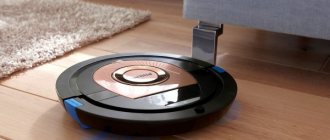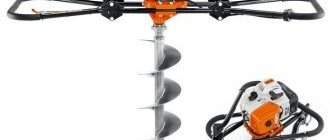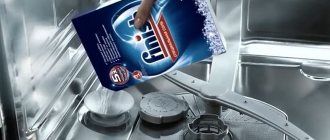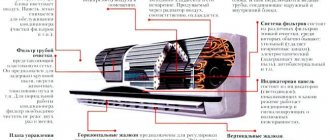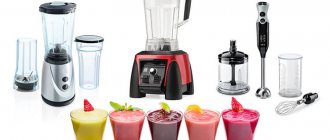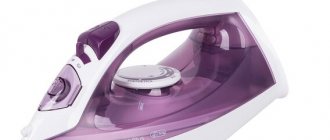Steamglide plus as an alternative
How is Steamglade plus different from other bases and what kind of sole is it? Philips has recently developed an improved base for irons. In addition to strength and durability, it gently and delicately stretches fabrics during ironing. When heated, the steam comes out and gently pushes the iron in the direction the owner needs. All you have to do is guide it, controlling the movement.
Which sole should you choose: Steamglade or Steamglade plus? If you iron regular linen and clothes, you can limit yourself to the first option. If you need to iron delicate fabrics and large surfaces, it is better to immediately buy an iron with an improved base. This will help save effort when ironing clothes and keep them fresh.
Care instructions
Since there is almost no direct contact with fabrics when using such irons, there is no need to clean them. Sometimes scale appears on the surface due to constant work with steam. This can be removed with a cleaning pencil, but regular pencils may not be suitable for delicate ceramic surfaces. The best thing is to monitor the condition of the sole and regularly wipe it with a dry, clean cloth after each use.
It is necessary to monitor whether scale has appeared in the depths of the holes. To prevent its occurrence, you need to periodically release fresh steam after ironing and wipe the base dry. If severe contamination still occurs, it is not advisable to use cheap pencils.
Advice! Philips offers a set of products for cleaning the bases of irons. They are produced in the form of tablets.
T-ionicGlide base
There is another alternative from Philips in the Azur line of irons. This is a t-ionicglide sole. She has:
- increased resistance to chips and scratches;
- “smart” steam generation technology;
- softness when sliding.
The base has a special design: when steam is released, it is impregnated with air particles. This effect is called ionization. It provides flawless ironing, and the air in the room remains fresh even after prolonged use of the device. The surface is made of stainless steel, with an additional titanium coating.
Which Philips iron is better to buy?
Philips irons have many positive reviews because these devices do an excellent job. They iron any fabric quickly and safely, have a long service life and are equipped with additional functions.
The efficiency of ironing is affected by the power of the iron, so you need to focus on this characteristic. Devices with ratings from 2300 to 2500 W do an excellent job of this task. They have the best price-quality ratio, at the same time, they cope perfectly with vertical steaming and can automatically turn off when not in use.
If high speed comes first and you have to iron a lot, you can choose an iron with a power of 2800 to 3000 W and a large water tank (350 ml). These models make work much easier because they do not require switching modes, which means they save time. But their cost is quite high.
Design plays an important role.
Philips pays attention to the stylish design of its equipment, so you can find powerful and safe devices in any color and color combination on sale. Enjoy the shopping! Thanks to All.ru in Yandex Zen. Daily updates, subscribe, we have a lot of interesting things
Daily updates, subscribe, we have a lot of interesting things
Steel glide
Translated from English, “steel” means “steel”. That is, the sole of the steel glide iron literally means “steel glide”. If your iron has these words written on it, it means it has a stainless steel soleplate.
Features of stainless steel soles: advantages and disadvantages
Steel soles have been used in irons for quite a long time and are not going to lose their position. They replaced heavy cast iron irons and have remained with us to this day, despite the constant attempts of developers to come up with something revolutionary. Let's figure out what's so good about stainless steel electric iron soles, and what are the disadvantages.
pros
- Steel is much stronger than aluminum, ductile and not subject to deformation due to the strong structure of the molecular lattice.
- It glides perfectly over the fabric and does not leave behind shiny marks. Modern models use improved polishing for improved glide.
- Compared to more modern ceramics, old steel is ductile. This circumstance allows housewives to awkwardly drop their irons on the floor over and over again without fear that they will break down.
- Price quality. Devices with a steel sole have the most optimal ratio of cost and operating conditions, which is confirmed by their steady popularity today.
- High quality ironing. You don’t need to come up with tricks, as is the case with aluminum irons, to iron a wool item.
We've dealt with the good stuff. But there is another side to the coin. Let's look for the negative aspects of irons with steel soles.
Minuses
- Weight. All housewives know that an iron is a heavy thing. Especially with water inside. The source of their knowledge is their experience with steel irons.
- Uneven heating of the sole. The thermal conductivity of steel is significantly lower than that of competitors. Therefore, it is necessary to wait some time before starting ironing.
- Not easy to clean. Cleaning the sole from burnt synthetics is not so easy.
In order to neutralize the shortcomings of generally positive steel irons, manufacturers come up with various coatings. Teflon, sapphire, ceramic coating and enamel - all of them are designed to improve glide, make heating more uniform, and cleaning easier. Let's consider one of the types of steel sole coatings - the development of steamglide advanced.
Outsole requirements
The working surface of the iron must have a number of properties that will ensure the desired quality of ironing. Sole requirements:
- safety of linen, it is important that there are no defects left on the woven material;
- smooth sliding, nothing should interfere with the movement of the iron on the fabric, often this property is ensured by the type of base material and the quality of its processing at the manufacturing stage;
- heating should be carried out evenly over the entire area of the iron sole, otherwise the risk of damage to the material during ironing increases, since in some areas the temperature effect is more intense than in others;
- resistance to mechanical damage upon impact, contact with hard decorative elements of things that have to be ironed, which means the strength of the base of such equipment is a key criterion when choosing;
- ease of maintenance, in this case they take into account how easy it is to clean the surface;
- the material must have high thermal conductivity, which will allow the sole to instantly warm up and transfer heat to the laundry during ironing.
When choosing an iron, consider different options, characterized by different types of working surfaces.
Types of work surfaces
Among other criteria, the type of material is taken into account:
- Aluminum. This is a lightweight material with high thermal conductivity. The aluminum work surface may leave subtle traces of melting on the material. In addition, this material is not resistant to damage; scratches quickly appear on such a sole.
- Stainless steel. It is quite durable and is used in mid-price iron models.
- Ceramics. The soles of this type are distinguished by maneuverability and glide easily over the material. However, they are susceptible to deformation at the slightest impact.
- Teflon. A working surface with such a coating does not damage the material. Disadvantages: high cost and instability to damage. When in contact with various hard elements of clothing, Teflon quickly scratches.
- Titanium. This working surface is smooth and ensures easy sliding over the material. The main advantage is high strength.
There is also an option with removable soles. These are universal irons. They can be used simultaneously to work with thin and coarser materials. Only for each case a different sole is used. At the same time, the iron kit includes 1 more removable working surface.
A little history
A century ago, housewives successfully handled ironing using a heavy cast iron iron heated over coals. This device was constantly improved in the course of technical progress; its base began to be made first of aluminum, and a little later - of stainless steel. Today, many types of products from a wide variety of materials no longer surprise anyone. The consumer can choose either the usual aluminum or innovative titanium. Which is better and how does the steamglide iron sole differ from its earlier counterparts? Should you trust new products or opt for material that has been proven over the years?
Which one is better to choose?
You won’t find precise advice on what will be best for you here. This review only gave you food for thought about what the main types of soles in irons are. Each manufacturer calls the same type of coating differently, patenting their “invention.”
If you see the words “steel glide” on a product, this means that this is an iron with a stainless steel soleplate. The word “steam” indicates that the device uses the “steam cushion” principle (mostly from Philips). Other words indicate the use of spraying on the sole.
General advice will be like this. Think about how your owner uses the iron.
- If everything is always falling out of her hands, then she should not choose an iron with a ceramic or cermet sole, because it will soon break.
- If she still keeps her grandmother’s old iron in perfect condition, then you can delight her with a new, light and beautiful one.
- Depending on your finances, choose a manufacturer. Long-established companies are more trustworthy. Please also pay attention to the availability of service centers. Just in case.
So we have discussed with you the issue of soles in modern irons. I hope you got some useful information from this review. Good luck to everyone!
Steamglide advanced
The steamglide advanced iron soleplate is used on modern Philips irons. This coating on the stainless steel soles is a six-layer titanium coating. Titanium is the material from which space objects are made. It has high density and resistance to external influences. Even if it occurs to you to scratch it on purpose, you are unlikely to succeed. In addition, if something burns to the titanium sole, you just need to wait for the metal to cool and remove the carbon deposits.
The fly in the ointment in all this harmony will be the price of the material. Titanium is quite expensive, so you won’t find irons with soles made of pure titanium. Spraying varies depending on the manufacturer. Of course, the thicker the titanium layer, the longer it will last. But the higher the price of the product will be.
